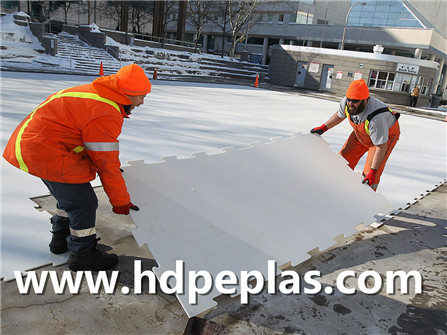- +86-156 2426 6857
- amy@sdxxhg.com
High Density synthetic ice panels have a beaded surface when they're new. This makes it easier to skate on when the surface is new, as the beading reduces the friction so you will glide better.
Then, as the skate blades begin to nick the surface and scrape off the beaded heads, the scratches and imperfections themselves act as friction reducers, enhancing the skate glide.
High density panels always require the use of a glide enhancer, and may scatter more plastic shavings than do ultra-high density panels.
The very best and most advanced panels are ultra-dense and have beads of oil actually engineered into the polymer itself. You'll get constant and even lubrication, and the lowest COF. These panels are also very pricy, being a new technology. Depending on your needs, they may be overkill.
Second: The synthetic panels you choose should offer a rock-bottom coefficient of friction (COF) - the lower the better.
The densest polymers have the lowest COF - 10% or lower. A COF of over 20% means it will not be fun to skate - you'll feel like you're 'walking' more than skating.
Very low friction results in:
High gliding ability - as close to ice as possible. This makes for ideal training and skating sessions. Plus, muscle development and memory is reinforced correctly.
Reduced dulling of skate blades. Medium to lower density synthetic has increased friction which wears your blades more rapidly, necessitating more frequent sharpening.
Low wear on the panels. The better the quality, the less abrasion, or shaving off of the panels, or deep scratches. This means increased longevity and less littering of shavings around the rink that can stick to clothes and increase friction.
